Catalog
Search
44 products
View:
- Selected: 0Areas of use
- Selected: 0Item names
- Selected: 0Manufacturer
- Selected: 0Made in
- Selected: 1Additional
View:
44 products
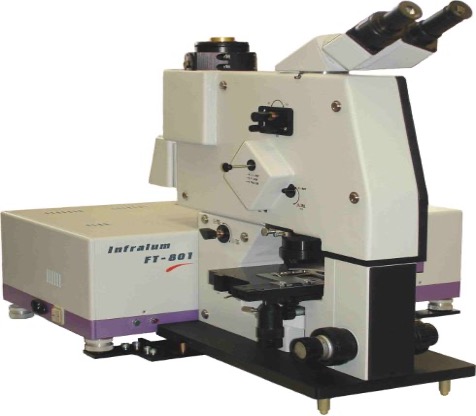
IR microscope "MIKRAN"
The IR microscope "MIKRAN" is designed to work with IR Fourier spectrometers "Infralum FT-801". The spectral range is 6000 – 600 cm-1 (with a microscope and an MST detector cooled with liquid nitrogen). Resolution 0.5, 1, 2, 4, 8 cm-1 (determined by the resolution of the Fourier spectrometer)
SIMEKS
Novosibirsk
Produced in: Novosibirsk
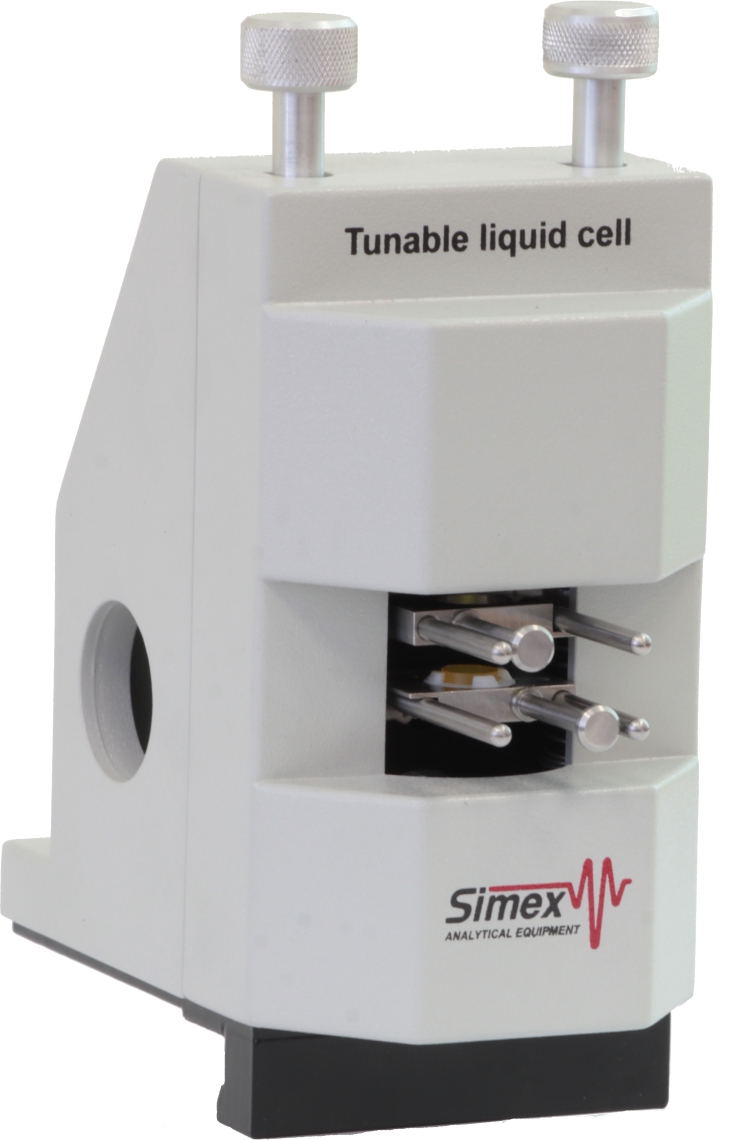
Liquid flask with adjustable thickness of the test liquid layer
A liquid flask with an adjustable layer thickness of the liquid under study is made in the form of an optical-mechanical attachment installed in the cuvette compartment of the FT-801 spectrometer. It contains focusing optics, removable holders of two windows-substrates with a diameter of 10 mm and two adjusting screws placed on the upper panel of the console housing and designed to set the required gap between the windows.
A liquid of any degree of viscosity is pre-applied in the form of a small drop to the lower window and then, in the process of smooth convergence of the windows, evenly fills the gap between them. By rotating the adjusting screws and observing the transmission spectrum online, the user has the opportunity to set the desired thickness of the liquid layer, guided by the overall intensity of the entire spectrum or by the intensity of specific absorption bands. In the presence of calibration, which is easy to create using the ZaIR 3.5 program for several samples with a known concentration, the cuvette allows quantitative measurements. The flask is indispensable in the analysis of mixtures containing impurities in small proportions.
Technical specifications
Transmission in the operating range of the spectrum, % of the input signal at least 50
The recommended number of scans when registering spectra is 16
Time of spectrum registration at 16 scans (resolution 4 cm-1), sec 20
Minimum volume of the studied liquid, mm3 1
The diameter of the focus spot, mm 3
Overall dimensions, mm 200×90×160
Weight, kg 1,1
The figure shows several spectra of the viscous lubricant "Buxol", illustrating the process of selecting the thickness of the sample layer between the windows.
The measurement process has a high expressiveness and reproducibility, inexpensive replaceable substrate windows are used, the system is easy to configure and clean, a very small amount of sample is required to obtain high-quality spectra.
SIMEKS
Novosibirsk
Produced in: Novosibirsk

MAESTRO-αMS gas chromatograph by Interlab
We offer expert laboratories of physicochemical methods of analysis a gas chromatograph with a quadrupole mass spectrometric detector «MAESTRO-αMS». Quadrupole GC-MS «MAESTRO-αMS» is in demand for targeted research (screening) and non-targeted search. In targeted studies, it is necessary to detect given target compounds in samples of various nature and origin at the level of residual amounts, for example, several picograms of the target compound in the injected 1 μl of liquid sample. Most often, targeted research is carried out in the following areas of laboratory screening: ecology, food safety, clinical monitoring, narcology, doping control, production control of various raw materials. In targeted studies, it is often required not only to confirm the presence of a compound in a sample, but also to determine the level of its content quantitatively, since both the list of target compounds and the permissible level of their presence in the sample are specified by regulatory documents. Quantitative analysis requires standards for the substances you are looking for. When conducting a non-target search, as a rule, it is required to analyze a sample of unknown composition, in other words, to find as many compounds as possible in the sample and identify (identify) each of them. Since the identification of a detected compound is carried out by comparing its experimental mass spectrum with the spectrum of a pure substance obtained under standard conditions, this task requires reference libraries of mass spectra of pure substances, as well as tools for working with mass spectra, for example: algorithms for cleaning experimental mass spectra from background and spectral noise (mass spectrum deconvolution algorithms), library search and comparison algorithms. An off-target search is called a qualitative analysis, since the researcher is primarily interested in the list of detected substances, and not in the quantitative assessment of their content in the sample. When creating MAESTRO-αMS, we took into account our own many years of experience in operating imported analogues. We have made the device inexpensive. We have made the device compact: The modern design of the device made it possible to make the MAESTRO-αMS really compact, so that the device occupies the smallest possible area on the laboratory table. The layout of the device allows you to remove the ion source on the front flange for cleaning and replacing the cathodes, if necessary. We have reduced the cost of operation: When developing the MAESTRO-αMS, we sought to increase the resistance of the device to sample matrices and use a minimum of consumable materials in order to eliminate downtime for maintenance and replacement. As a result, we have created an extremely stable ion source and a perpetual photomultiplier detector. We have created special software: Even at the first acquaintance with the software, it becomes obvious that being in the window of each button and each parameter to be changed is expedient and logical. Our software product was created for the convenience of the operator, so we implemented the necessary and eliminated the unnecessary. We used the principle of one active window, in which the operator moves sequentially step by step, performing hardware settings, setting the data collection method, subsequent processing algorithms, templates for presenting the results. MAESTRO-αMS offers a wide range of scanning modes, built-in algorithms for working with mass spectral data, convenient unloading of initial data arrays for their processing in specialized software packages, graphics export for presentations and scientific publications. You can use several libraries of mass spectra at the same time, or create your own for your typical tasks. Finally, we provide a 5-day training course for professionals who want to understand the theoretical foundations of the method and their implementation in the hardware of modern quadrupole GC/MS. The volume and depth of presentation of the material from the developers of the device is intended to lay the foundation for the effective use of «MAESTRO-αMS» in the future. Some technical characteristics of MAESTRO-αMS: • Instrumental detection limit (SIM, OFN @272 m/z ) < 10 fg; • Scan modes: scan for selected ions, full scan in a given mass range, combined scan mode; • The number of simultaneously connected libraries of mass spectra is at least 10.
INTERLAB
Moscow
Produced in: Moscow
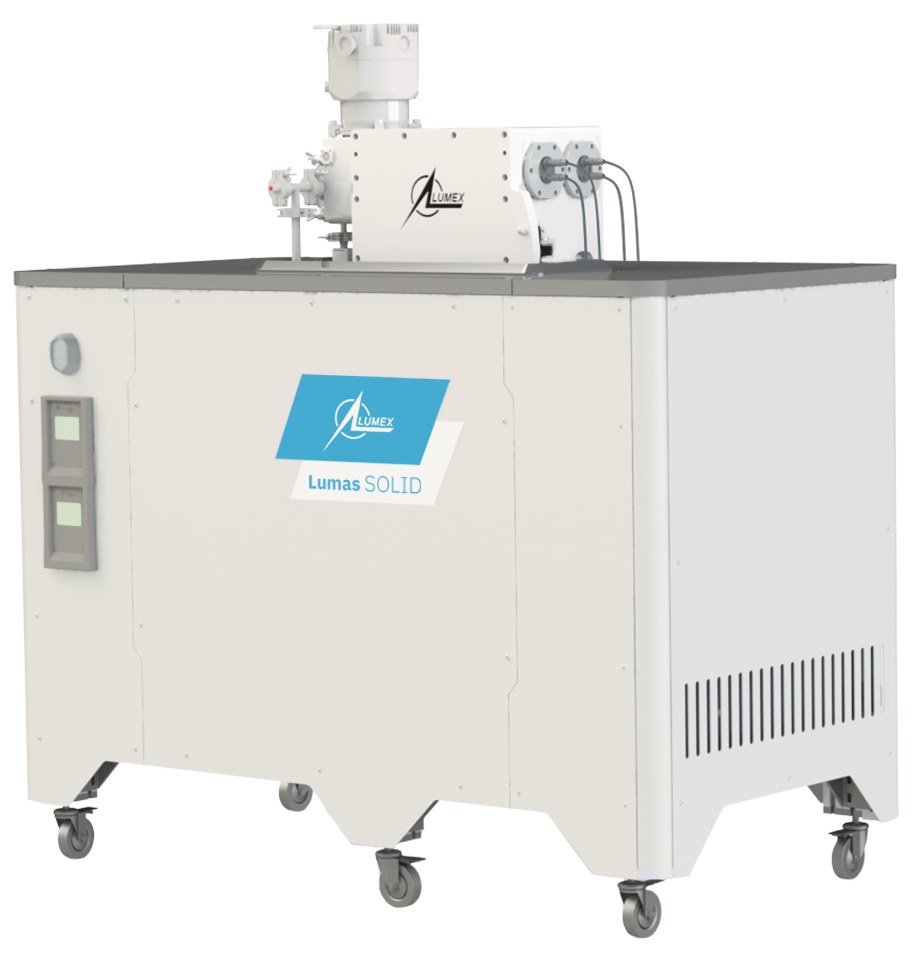
Mass spectrometer for the analysis of solid-phase samples "Lumas GAS"
2 supp.
from
218.11 ₽
Technical specifications:
Ionization method Glow discharge plasma
Discharge gas Air
Time-of-flight Mass Analyzer with mesh-free ion mirror
Resolution 4000
The number of simultaneously defined components is not limited
Mass range 1-1000 m/z Detection limits 10-100 ppt
Analysis time 1-3 min Vacuum system 1 Booster pump and 2 TMN (240 l/sec)
Overall dimensions 1450×780×1550 mm
Lumeks
Saint Petersburg
Produced in: Saint Petersburg
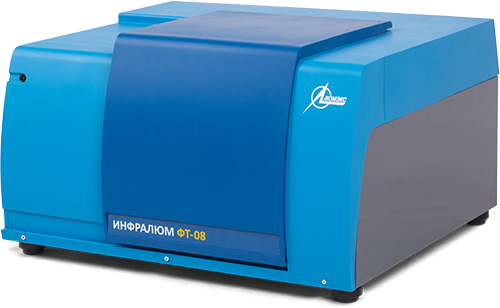
Infrared Fourier spectrometer "InfraLUM® FT-08"
1 supp.
Technical specifications:
Operating spectral range, cm-1 from 400 to 7800
Spectral resolution, cm-1, not more than 0.7
The limit of the absolute error of the wavenumber scale, cm-1 ± 0.05 Signal-to-noise ratio (RMS) for the wavenumber 2150 cm-1, determined in the range ± 50 cm-1 for a resolution of 4 cm-1 and an accumulation time of 60 s, at least 40,000 The limit of deviation of the 100% transmission line from the nominal values for the wave number 2150 cm-1, determined in the range ± 50 cm-1, %
± 0.2
The level of positive and negative pseudo-scattered light caused by the nonlinearity of the photodetector system, % ± 0.25
The time of setting the operating mode of the spectrometers, h, no more than 2
Continuous operation time of spectrometers, h, not less than 8
Power consumption, In × A, not more than 65
Overall dimensions, mm, not more than 580x550x340 Weight, kg, not more than 32 Average time to failure, h, not less than 2500
Average service life of the spectrometer, years, at least 5
Lumeks
Saint Petersburg
Produced in: Saint Petersburg

Atomic absorption spectrometer "MGA-1000"
1 supp.
Technical specifications:
Operating spectral range, nm from 190 to 900 Spectral resolution, nm, no more:
- in the range from 190 to 600 nm inclusive
- in the range over 600 to 900 nm inclusive 2
3
Limit of detection of manganese, pg, no more than 3
Nickel detection limit, pg, no more than 20
The time of setting the operating mode of the spectrometers, min, no more than 15 The time of continuous operation of the spectrometers, h, no less than 8
The spectrometers are powered by a three-phase alternating current network:
- rated supply voltage, V
- frequency, Hz 380 (50 ±1)
Overall dimensions of the spectrometer, mm, no more than 800 x 475 x 310
Mass of the spectrometer, kg, no more than 50 Power consumed by spectrometers, kV * A, no more:
- in standby modes and settings of analytical parameters
- in atomization and purification modes 0.1
6 Average time to failure, h, not less than 4000
Lumeks
Saint Petersburg
Produced in: Saint Petersburg
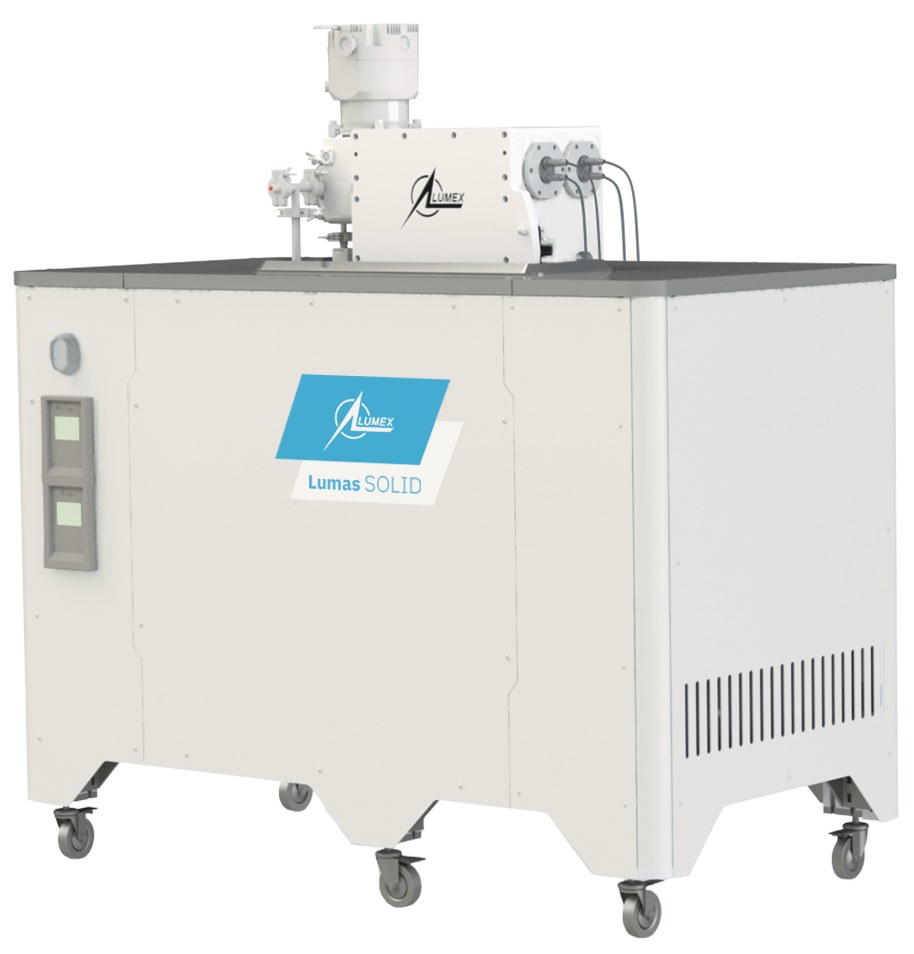
Mass spectrometer for the analysis of solid-phase samples "Lumas SOLID"
1 supp.
Technical specifications:
Method of ionization Plasma pulsed glow discharge
Discharge gas Argon, consumption less than 1 l/hour
Time-of-flight Mass Analyzer with mesh-free ion mirror
Resolution 4000
The number of simultaneously defined components is unlimited
Mass range 1-1000 m/z
Detection limits 1-100 ppb
Layer-by-layer resolution Up to 5 nm
Depth of analysis Up to 30 microns
The time for one analysis of a solid sample is 30 minutes (with the option of a revolver system – 3-5 minutes) Vacuum system 1 Booster pump and 2 TMN (240 l/sec)
Overall dimensions 1450×780×1550 mm
Lumeks
Saint Petersburg
Produced in: Saint Petersburg
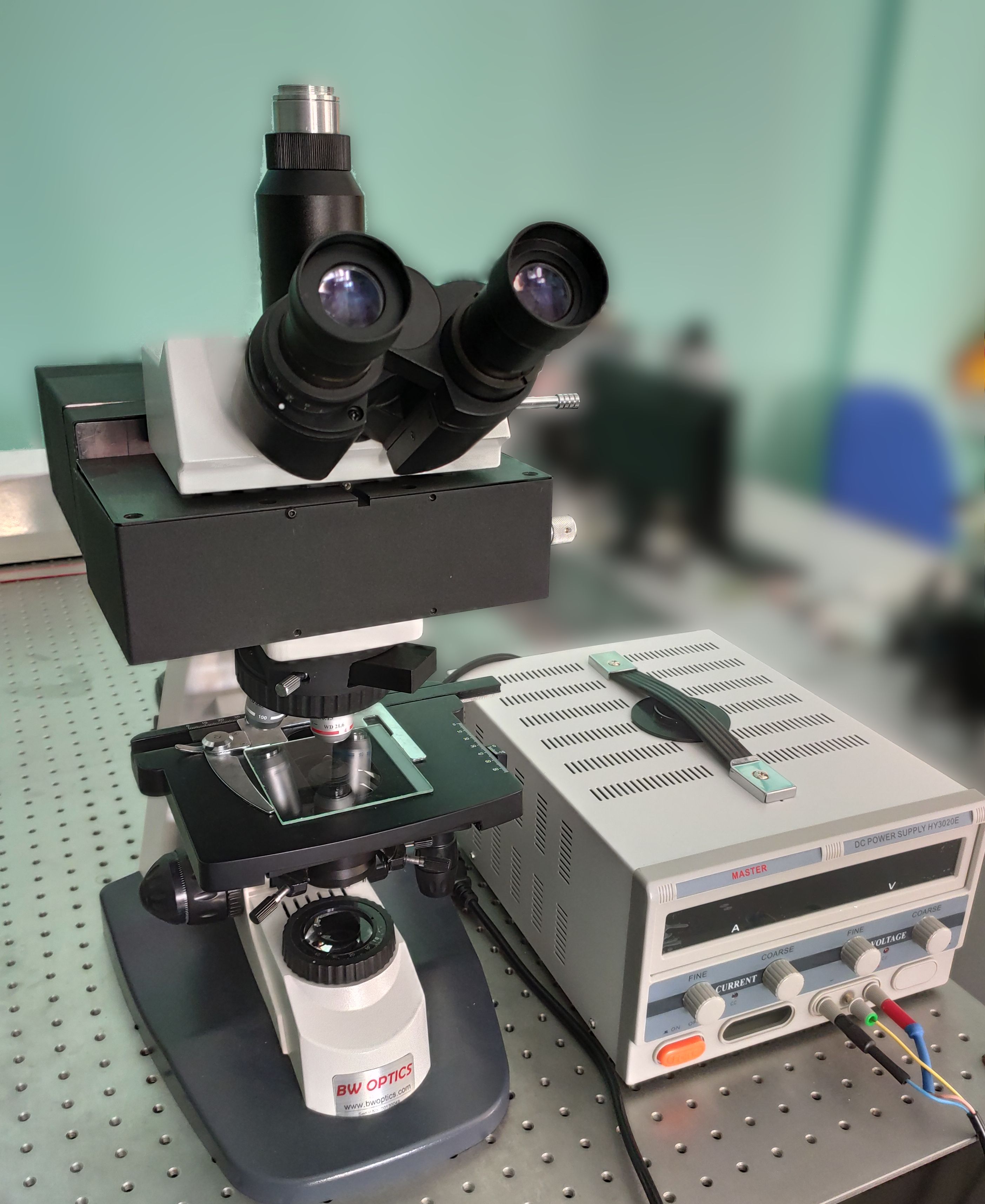
Acousto-optic video spectrometer
At the Scientific Research Center of the Russian Academy of Sciences, the technology of acousto-optic filtration of optical radiation is used to create a wide class of optical devices that are successfully used, for example, in biomedicine to diagnose various diseases (including oncology), in agriculture to diagnose the condition of plants, during non-destructive testing of complex technical objects and in solving other tasks.
Acousto-optics has a number of important advantages over other technologies for obtaining spectral information:
- the ability to create imaging devices without spatial scanning, since the acousto-optic filter is a software-controlled tunable light filter;
- the compact modular design allows the acousto-optic filter to be integrated into the optical circuit of most imaging devices, which expands their analytical capabilities;
- spectrum scanning is carried out by means of an electrical signal, without mechanical scanning;
- fast arbitrary spectral addressing causes high shooting speed and the absence of redundant information;
- software management.
The key element of the presented device – an acousto–optic filter - is being developed at the Scientific Research Center of the UP RAS on the basis of original calculation methods. The manufacture of acousto-optic filters, optical and mechanical components, as well as the assembly, tuning, and calibration of such devices is also carried out at the Scientific Research Center of the UP RAS.
STC UP RAS
Москва
Produced in: Moscow
